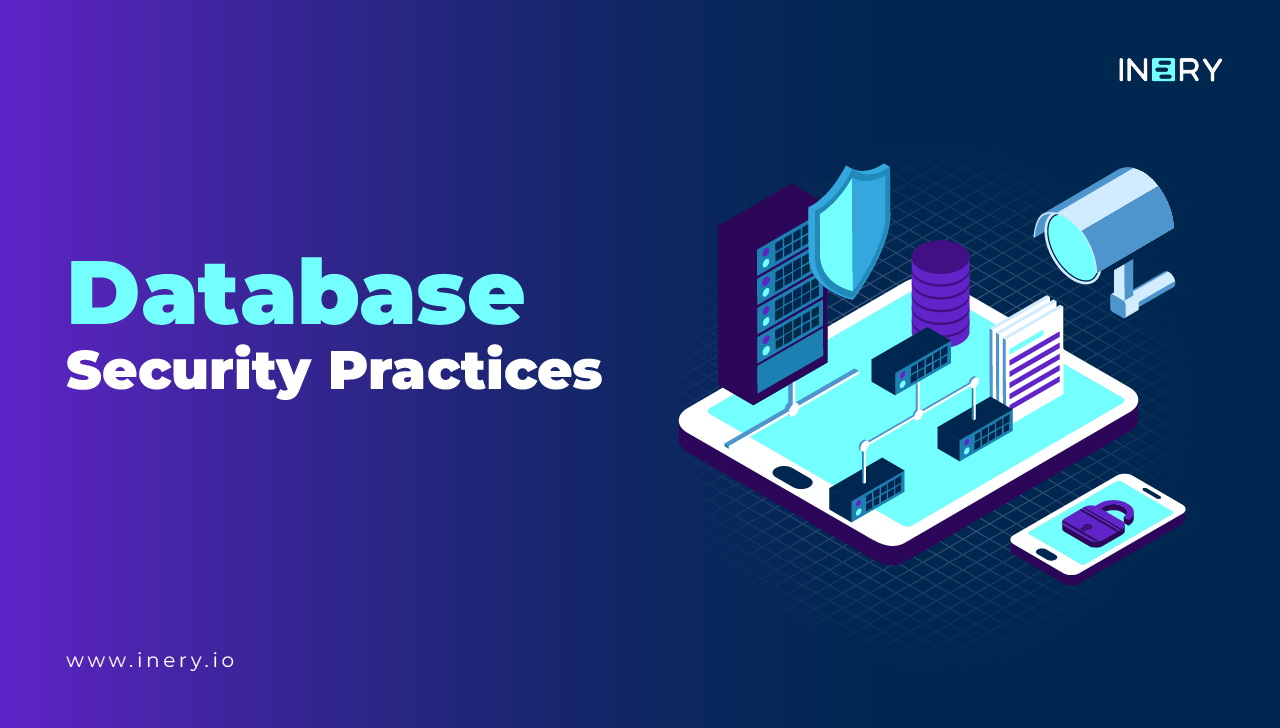Somewhere, right now, an IT team is drowning in coffee and racing against the clock to push out a critical update. Everything is set, the code works perfectly in the test environment, and deployment is just one click away. Then, the database refuses to cooperate. Queries that ran smoothly before now crawl, latency spikes, and reports fail to generate.
What was supposed to be a routine deployment turns into chaos. Developers throw frustrated glances at the database administrators (DBAs), blaming them for restrictive permissions. DBAs fire back, arguing that developers didn’t optimize their queries in the first place. Meanwhile, the database itself, bloated and struggling, is just following orders. This is a familiar scene in IT departments, replaying day after day, project after project.
For all the technological advancements we’ve made, IT teams and databases still have a love-hate relationship. Databases are the backbone of applications, but working with them is often more painful than it should be. IT teams want flexibility and speed. DBAs want control and stability. And somewhere in between, projects get delayed, users get frustrated, and businesses lose money.
So, why does this happen? And is there a way to end the silent war between IT teams and databases? Let’s break it down.
IT Teams in Small vs. Large Companies
Before diving into the problems, let’s talk about IT teams themselves. Not all IT teams operate the same way, and the challenges they face depend heavily on company size. In some companies, a single engineer might be juggling security, software updates, and database management, while in others, entire teams are dedicated solely to database administration.
How a company structures its IT team influences everything. From how quickly new features get deployed to how well databases are maintained. The gap between what IT teams need and how databases are managed isn’t just about tools. It’s about processes, priorities, and how different teams communicate (or don’t). A small startup with a handful of engineers will have a completely different approach to database management compared to a large enterprise with multiple specialized teams.
Small Companies: The Jack-of-All-Trades Approach
In small companies, IT teams wear multiple hats. A single engineer might be responsible for server maintenance, software updates, security patches, and database management all at once. This means they (usually) don’t have the luxury of specialization. Databases in this environment often run without administrators, leading to quick fixes rather than long-term solutions.
If something goes wrong, the solution is usually a mix of Googling, trial and error, and hoping for the best. There’s little room for deep optimizations, structured policies, or proactive monitoring. Databases in small IT teams tend to be just another tool rather than a system that needs continuous fine-tuning.
Big Companies: The Siloed Struggle
In contrast, large enterprises have dedicated DBAs, security teams, DevOps engineers, and compliance officers. While this sounds great in theory, it introduces its own challenges. Teams work in silos. This leads to bureaucracy, slow approvals, and more often than not – miscommunication. A developer may need a simple schema change but must go through multiple layers of approval, slowing down development cycles.
In large companies, the database is heavily protected, which is necessary but also frustrating. IT teams frequently run into permission issues, security policies, and long turnaround times when they need access to crucial data. This friction often leads to workarounds, shadow IT, and rogue databases that bypass official channels, creating more security risks.
Where It All Goes Wrong
IT teams and databases have always had a complicated relationship. Ask the nearest developer. No matter if it’s a start-up or enterprise – the same core issues keep resurfacing.
Traditional databases weren’t built with today’s IT needs in mind. Developers need speed, but databases are built for control. One side wants seamless access, the other enforces strict rules, and the middle ground is often hard to find. These mismatched priorities create roadblocks that slow projects down, spark endless debates, and make database management more painful than it should be.
Access Control and Permissions
DBAs and developers rarely see eye to eye when it comes to access control. DBAs enforce strict security measures, ensuring only authorized personnel have access to sensitive data. Developers, on the other hand, need flexibility to build, test, and iterate quickly.
The result? A constant tug-of-war. When access is too restricted, projects slow down. When it’s too open, security risks multiply. This often leads to developers finding workarounds, like storing credentials in unsecured locations or spinning up unauthorized databases just to get things done. Meanwhile, DBAs, wary of potential breaches, tighten restrictions even further, fueling frustration on both sides.
A classic example of this battle would be when developers, frustrated by constant delays in getting access approvals, decide to take matters into their own hands. Without informing IT, they spun up a separate database outside of the official infrastructure, thinking it would speed up development and testing. Everything worked fine. Until it didn’t.
A misconfiguration left sensitive customer data exposed, and when the breach was discovered, both teams pointed fingers. The developers blamed IT for making access too restrictive in the first place, while IT blamed the developers for bypassing security protocols. In the end, it was a costly lesson that neither extreme (i.e. total lockdown or unchecked access) solves the problem.
DBAs need to enforce security while making sure only the “right people” can access sensitive data. Developers, on the other hand, need flexibility. Too many restrictions slow down projects. Too few create security risks. Striking the right balance is often impossible.
Sadly, this often leads to developers hoarding credentials, DBAs locking down even further, and security policies becoming a bureaucratic nightmare.
Schema Changes (Also Known as A Developer’s Nightmare)
Developers need to modify database schemas when adding new features, but making changes in production is risky. One bad migration can break an entire system. DBAs enforce strict change control processes, leading to bottlenecks and slow approvals.
They often resort to duplicating databases, working with outdated schemas, or bypassing DBA teams altogether. This turns into a cycle of patchwork fixes, conflicting records, and mounting frustration for IT teams.
Performance Issues
One moment everything works, the next – nothing moves. And just like that, the blame game begins. Developers insist the database is sluggish. DBAs claim the queries were never optimized. Meetings are held, fingers are pointed, and meanwhile, users are left dealing with a frustratingly slow system.
The root cause? Often, it’s a lack of proper indexing, query optimization, or proactive monitoring. But instead of working together to solve the issue, teams stay locked in their silos, only addressing the problem when it becomes a full-blown crisis.
The “Did We Have a Backup?” Panic and Recovery
Backups should be a given, yet too many companies treat them as an afterthought. When disaster strikes (a crash, corruption, or cyberattack) IT teams rush to recover data, only to discover their backups are incomplete, outdated, or worse, missing entirely.
Developers think backups are the DBA's job. DBAs assume the operations team has it covered. No one double-checks until disaster forces them to, and by then, it's too late.
Scaling Databases
As businesses grow, databases need to handle more users, transactions, and data. Scaling databases isn’t something companies plan for until they have to. By then, it's a scramble to keep up with demand, throwing more resources at the problem rather than addressing the underlying inefficiencies.
Small companies often hit performance bottlenecks because their databases weren’t designed for scale. Large enterprises struggle with legacy databases that don’t adapt well to modern cloud-based workloads. Either way, scaling is painful, costly, and often delayed until absolutely necessary.
Can We Stop the War?
So, is this just how IT teams and databases will always interact? Not necessarily. The core issue is traditional databases weren’t built for agility, security, and scalability at the same time. But decentralized database management systems (DDBMS) change the game, and that’s exactly what Inery is doing.
With Inery DLT, IT teams don’t have to fight databases anymore. Let’s demonstrate why.
Permissioned Access Without Bottlenecks
Access control has long been a sticking point between IT teams and database administrators. Developers need speed, while DBAs need security, and these conflicting priorities often lead to bottlenecks. Some companies over-restrict database access, leading to frustrated developers who find risky workarounds. Others allow too much access, exposing sensitive data to potential breaches.
Inery solves this by implementing a hierarchical access control system that balances security with efficiency. With customizable permission structures, IT teams can grant necessary access without compromising security. No more back-and-forth approval delays, no more storing credentials in plain text files. Just a streamlined, controlled environment that works for everyone.
Schema Changes Without Chaos
Changing a database schema is one of the most delicate operations in IT. A poorly executed schema update can break entire applications, causing downtime and lost revenue. Traditional database environments require extensive approvals, testing, and coordination, which slows down development cycles.
Inery simplifies this by leveraging smart contract-powered updates, allowing structured schema changes to be executed in a controlled, automated manner. Instead of endless approval loops, IT teams can implement modifications with built-in validation mechanisms that prevent conflicts and ensure system stability.
Performance Without Pointing Fingers
As we previously mentioned, when an application slows down, IT teams often get stuck in an endless blame game. Developers point to the database, DBAs blame inefficient queries, and end users suffer the consequences. Performance optimization is an ongoing challenge in centralized databases, where bottlenecks can occur due to inefficient indexing, suboptimal query execution, or infrastructure limitations.
Inery’s optimized distributed architecture ensures that data retrieval remains fast and efficient, no matter the workload. By distributing data storage and processing, query latency is significantly reduced, allowing applications to scale smoothly without the typical performance bottlenecks that plague traditional databases.
Backups That Just Work
Data loss is one of the biggest nightmares for IT teams. Whether due to hardware failure, accidental deletion, or cyberattacks, restoring lost data is often complicated by outdated or incomplete backups. Traditional backup systems rely on scheduled snapshots, which can miss critical updates between backup intervals.
Inery eliminates this risk through immutable, distributed storage. Instead of relying on centralized backup systems, data is continuously stored across multiple nodes, ensuring that even in the event of failure, no critical information is lost. This means IT teams no longer have to scramble to recover lost data. It’s simply always available when needed.
Scalability Without Surprises
Growing businesses face one inevitable challenge: handling increasing amounts of data. Scaling a traditional database requires adding more powerful servers, reconfiguring infrastructure, and dealing with unexpected slowdowns. Many companies don’t anticipate these growing pains until performance issues force them to make costly upgrades.
With Inery’s distributed ledger technology (DLT), scalability is built into the system. Data is automatically distributed across multiple nodes, preventing bottlenecks and allowing companies to seamlessly expand without costly infrastructure overhauls. IT teams no longer have to react to scaling issues. They can grow confidently, knowing their database can keep up.
IT teams should focus on innovation, not database firefighting. Inery removes the friction, delays, and inefficiencies that make database management a war zone. This leads to more collaboration, better performance, and a system that works with IT teams, not against them.
Start managing databases the way they should be. Efficient, secure, and without conflict.

Inery•
2 years ago
IneryDB: How to Insert, Modify, and Remove Data
To insert, modify, and remove data in multi-index tables in IneryDB, click here and master IneryDB’s table operations. ...READ MORE
-1693472387.png)
Share

Inery•
2 years ago
Database Security Practices
Discover the significance of database security in safeguarding sensitive information and learn how Inery can enhance your data protection strategies ...READ MORE

Share

Inery•
1 year ago
How Blockchain Supports Sustainable Business Practices
Learn how blockchain technology promotes sustainable business operations by optimizing supply chains, supporting carbon credit trading, and ensuring data integrity. ...READ MORE

Share

Inery•
1 year ago
Are Crypto Regulations Ruinning Web3 Projects and Businesses?
As the crypto industry grapples with the regulatory surge, the destiny of Web3 projects hinges on finding harmony between innovation and regulation, shaping the decentralized ecosystem's future. ...READ MORE

Share
Most popular today



